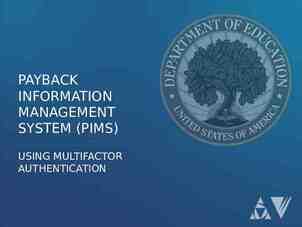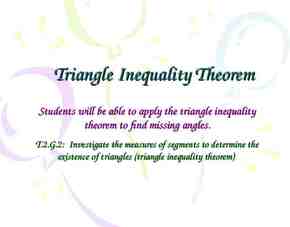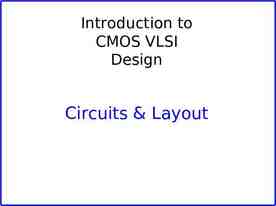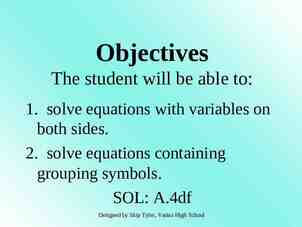MTAT.03.231 – Business Process Management Lecture 10: Process
28 Slides3.96 MB

MTAT.03.231 – Business Process Management Lecture 10: Process Automation Marlon Dumas University of Tartu [email protected] Slides prepared in collaboration with Marcello La Rosa (QUT) With contributions from Remco Dijkman (TU/e)

Where are we? Process identification Process Process architecture architecture Conformance Conformance and performance performance insights insights Process discovery As-is As-is process model model Process monitoring and controlling Process analysis Executable Executable process process model model Process implementation Insights Insights on weaknesses weaknesses and and their their impact impact To-be To-be process process model model Process redesign 2

From “conceptual” to executable models Conceptual “to-be” process models are made by domain experts provide a basis for communication amongst relevant stakeholders must be understandable must be intuitive and may leave room for interpretation contain purely a relevant set of process information Executable process models are made by IT experts provide input to a process enactment system - BPMS must be machine readable must be unambiguous and should not contain any uncertainties contain further details that are only relevant to implementation “to-be executed” process model 3

Bridging the gap: A five-step method 1. 2. 3. 4. 5. Identify the automation boundaries Review manual tasks Complete the process model Adjust task granularity Specify execution properties Adapted from teaching material of Remco Dijkman, TU/e. 4

Running example Customer Seller Supplier 1 Supplier 2 5

running example

1. Identify the automation boundaries Principle: not all parts of a process can be automated. - Start by identifying each task’s type: 1 2 Automated tasks 3 User tasks Manual tasks 7

In BPMN: specify task markers Automated tasks User task Manual task 8

In our example automated user manual

2. Review manual tasks Principle: if it can’t be seen by the BPMS, it doesn’t exist. - Find ways to support manual tasks via IT: via user task via automated task - Leave them out of the automated process 10

3. Complete the process model Principle 1: exceptions are the rule. Consider incomplete paths Rules of thumb If we send something to another party, what happens if they do not respond? What happens if the response comes late? What happens if they do not respond the way we expect? For each task: Can it go wrong and what happens if it goes wrong? For each external party: Have we captured all messages or queries they might send us? (use CRUD) Principle: no data no decisions, no tasks handover. Specify all (electronic) business objects For each task, determine which business objects it creates, reads, updates, delete (CRUD) For each decision, determine which objects it needs 11

In our example 12

4. Adjust task granularity The goal is to coordinate handovers of work between resources, therefore: - Aggregate any two consecutive tasks assigned to the same performer - Split tasks if they require different performers 13

An exception to the rule 14

Our example Before After Step Step 41

Bridging the gap: one task at a time 1. 2. 3. 4. 5. Identify the automation boundaries Review manual tasks Complete the process model Adjust task granularity Specify execution properties 16

5. Specify execution properties - Process variables, messages, signals, errors - Task and event variables and their mappings to process variables - Service details - Code snippets - Participant assignment rules and user interface structure - Task, event and sequence flow expressions - BPMS-specific: work queues, forms, connectors

Business Process Management System 18

Process modeling tool To create and modify executable process models (by specifying execution properties) To store and retrieve automation solutions from a process model repository May import from conceptual process modeling tools 19

Example process modeling tools Process Manager Bonita IBM Soft Business Bonita Open Solution 20

Execution Engine Instantiates executable process models (also called “cases”) Orchestrates distribution of work items to process participants and software services in order to execute a business process from start to end Logs execution data 21

Worklist Handler Imagine it as an “inbox” Offers work items to process participants and allows participants to commit to these work items Handles participants’ work queues and work item priorities May provide social network capabilities 22

Example worklist handlers Bonita Soft Bonita Open Solution 23

Administration & Monitoring Tools To manage automation solutions To configure access to system components To monitor participants availability and performance of process cases 24

Example monitoring & administration tools IBM BPM Process Admin Console IBM BPM Process Portal 25

External Services Expose a service interface with which the engine can interact The engine provides the invoked service with the necessary data it will need to perform the activity for a specific case Examples: rules engine, email or Twitter notification, DB connector, CRM connector 26

BPMS Landscape Other closed-source Big vendors IBM BPM Oracle BPMS Microsoft BizTalk, Wf SAP NetWeaver BPM Software AG webMethods Pagaystems PegaRULES Appian BPMS BizAgi BPM Suite Bosch inubit Suite OpenText BPM Perceptive BPMONe Progress Savvion (cloud) Effektif (cloud) Commercial open-source Bonita Open Solution Camunda Fox Intalio BPM JBoss jBPM Shark YAWL 27

Decision logic Resources External services Control flow User Interface Data artifacts






